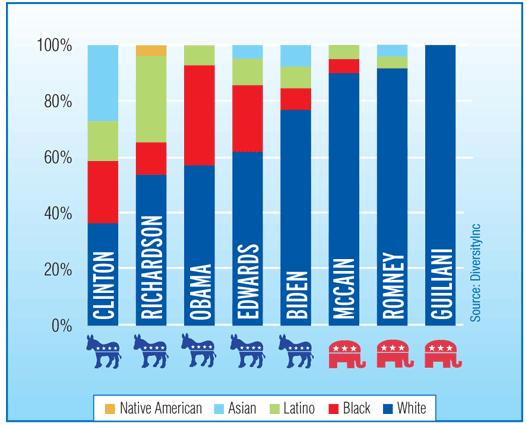
DiversityInc. recently took a look at the campaign staff diveristy of the leading presidential candidates. Considering that the democratic party has three diverse candidates (Hilary Clinton, Bill Richardson, and Barack Obama) to the republican’s big fat zero, it’s no surprise that democratic candidates would have greater staff diversity.
One could go on and on and try to make some sort of correlation between campaign staff diversity and a candidates’ ability to effectively lead an increasingly diverse America, but that angle has already been covered relentlessly. My main concern is whether staff diversity should even matter when evaluating a candidate? What information about a candidate’s ability to lead this country can be deduced by analyzing staff diversity?
As a corporate diversity officer I frequently get asked whether diversity representation numbers are a good indication of a company’s overall environment of inclusion. My response is “It’s not that straightforward.” On the one hand, staff representation is a nice shortcut – it tells you whether there are other diverse people in an organization. However, this doesn’t really tell you if the place is inclusive and if the leadership (in this case, the presidential candidates) really support an agenda that takes into perspective the needs of everyone in the organization (in this case, the United States of America). One assumes that a demographically diverse organization is also inclusive – but there are enough EEOC lawsuits out there to disprove this.
Would it be fair to say that since Hilary Clinton’s staff is more than 30% of Asian, she’s the best candidate for Asians? Probably not. It’s like saying that since Guiliana has NO minorities on his staff, he’s the worst candidate for minorities. Depending on your political leanings, you may actually feel this way. Nacht.








